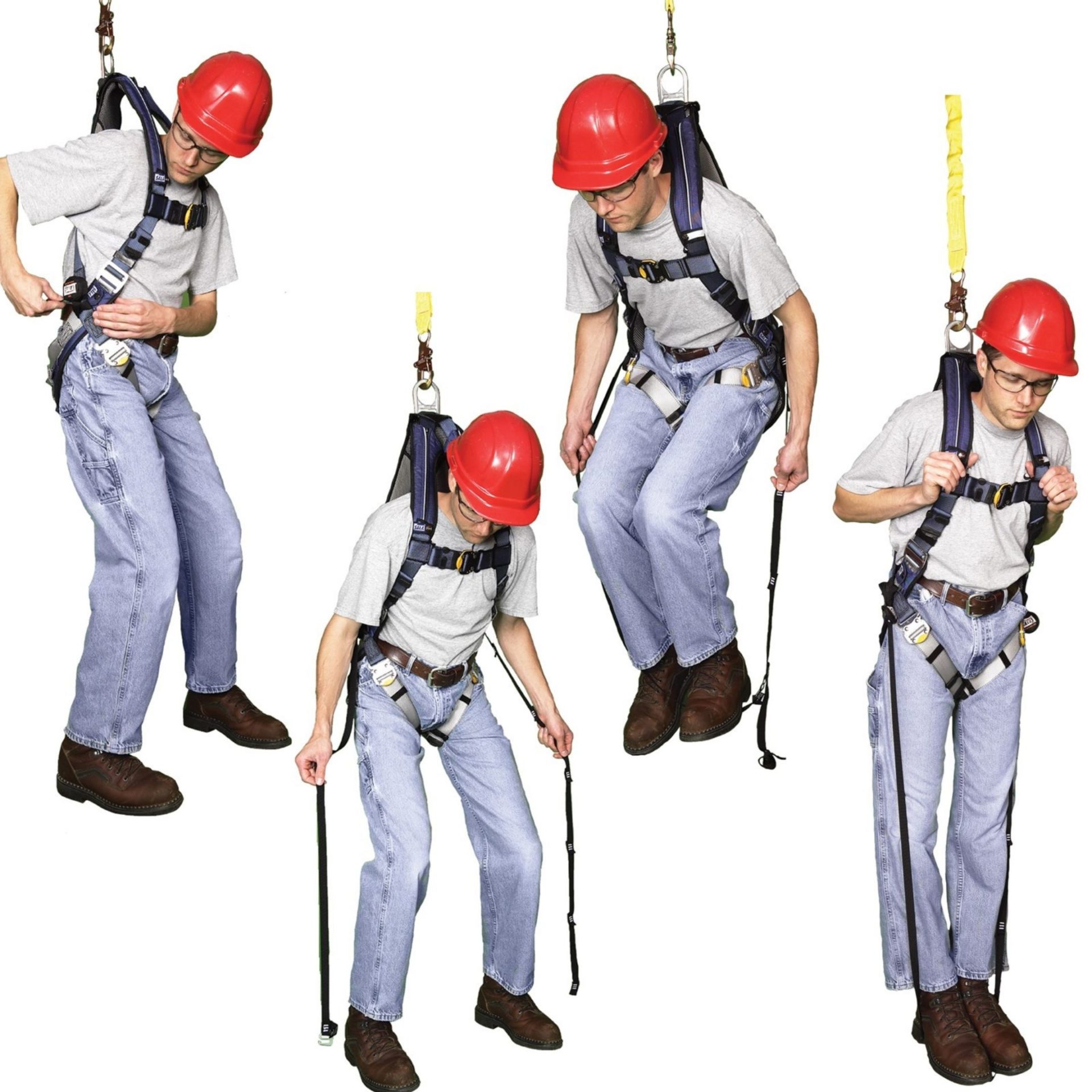Scissor Lifts Self Rescue

Platform Self Rescue
Platform-Installed Self-Rescue System – In the case where the platform controls are not responding and there are no other workers in the area who can provide assistance, a platform-installed self-rescue system may be employed. These systems are typically after-market devices that can be mounted in the platform that allow the operator to self-rescue by attaching the system to the front D-ring on their harness, exiting the platform and using the device to lower themselves to the ground.
Operators must receive extensive training on the use of the system and machine manufacturer approval prior to installing the system on the machine. Whenever an individual is suspended in air, it is critical that they continuously pump their legs (as if riding a bicycle) to minimize the likelihood of suspension trauma injury.
Any situation which prevents the platform being lowered to the ground by the operator using the normal controls, there will be needs for a clear plan to bring the platform and occupants safely to the ground in a timely manner.
Suspension Trauma Safety Straps
Suspension trauma safety straps, one pair, attaches to most harnesses. The Suspension Trauma Safety Strap was designed to help a worker overcome the potential negative health impacts of suspension trauma (otherwise known as Orthostatic Intolerance).
Suspension trauma, also known as harness hang syndrome, suspension syndrome, or orthostatic intolerance, is an effect which occurs when the human body is held upright without any movement for a period of time. If the person is strapped into a harness or tied to an upright object they will eventually suffer the central ischaemic response. Fainting while remaining vertical increases the risk of death from cerebral hypoxia. Since there is no evidence that these effects are specifically due to trauma, or caused by the harness itself, climbing medicine authorities have argued against the terminology of suspension trauma or harness hang syndrome and instead termed this simply “suspension syndrome”.
Another personal self-rescue option that should be a consideration in any rescue plan is a suspension trauma strap system. These lightweight systems mount onto the side straps of the operator’s harness. In the case of fall or ejection from the platform, the operator opens the case to release the straps, connects them at the proper length, and steps into the loop created by the straps
This allows the operator to stand up in their harness and relieve the pressure being applied to the arteries and veins around the top of the legs until they can be rescued.
- These systems can be used to lower the individual from the platform, or to self-rescue after experiencing a fall or ejection from the platform.
- These systems are also after-market devices that can be mounted directly onto the operator’s full-body harness. The PPE lanyard is then attached to the device prior to commencing the work.
- The system allows the operator to self-rescue by exiting the platform and activating the device to lower themselves to the ground or to within rescue range from another MEWP.
- Operators must receive extensive training on the use of the system and approval from their employer prior to installing the system on their harness.
